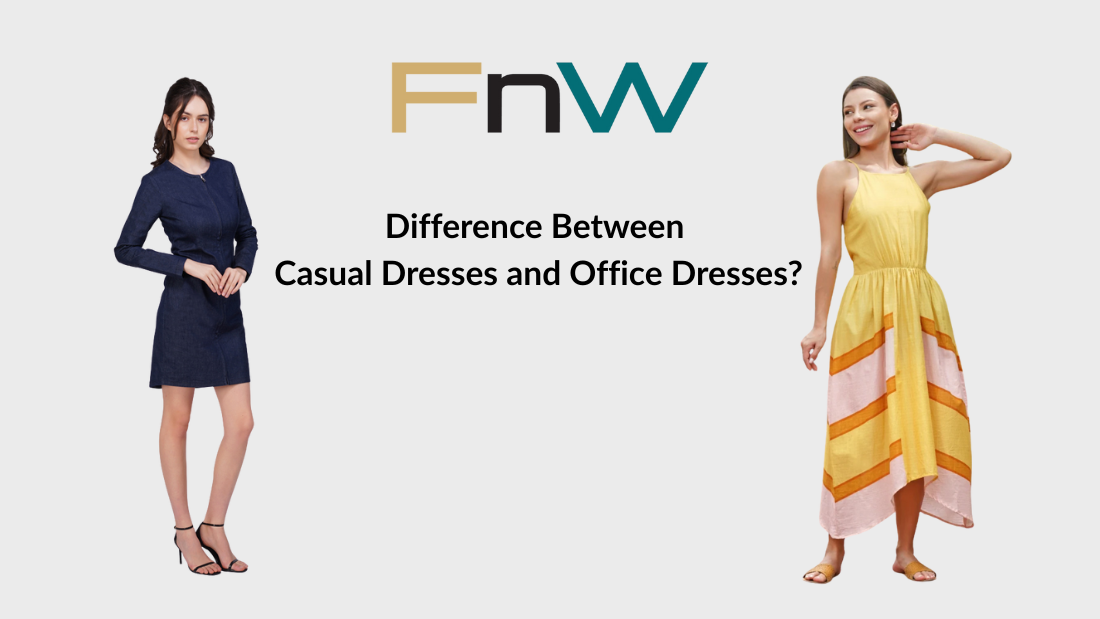
What is the Difference Between Casual Dresses and Office Dresses?
Share
When it comes to dressing well, one of the most common confusions many women face is choosing between casual dresses and office dresses. Both serve different purposes, and understanding the key differences can help you pick the right outfit for every occasion.
Whether it’s a weekend outing or a busy workday, the right choice of dress can make you feel comfortable, confident, and stylish. Let’s explore the major differences between casual day dresses and office-ready attire.
1. Purpose of Dressing
-
Casual Day Dresses: Designed for comfort and style, casual dresses are perfect for relaxed outings, brunch with friends, shopping, or even lounging at home. These are often lightweight, breathable, and easy to wear. From casual everyday dresses to casual cotton dresses, they focus on effortless fashion.
-
Office Dresses: Professional settings demand structure and formality. Office dresses are tailored to look polished and work-appropriate. Think sheath dresses, shift dresses, and midi dresses in neutral or muted tones that give a refined appearance.
2. Fabric and Comfort
-
Casual Wear: Most dresses for casual wear are made from cotton, linen, or jersey fabrics, ensuring softness and breathability. A white casual dress or a printed cotton outfit is an excellent choice for all-day comfort.
- Office Wear: Traditionally, office dresses are made from polyester blends or crepe. However, these fabrics can often feel heavy, trap heat, and lack breathability—making long hours at work uncomfortable.
- A better choice is cotton office dresses. Pure cotton fabric keeps you cool, fresh, and comfortable while still looking polished. Cotton not only feels good on the skin but also aligns with a healthier and more sustainable wardrobe.
3. Design and Patterns
-
Casual Outfits: You’ll find fun prints, bright colors, and trendy cuts in casual dresses. Seasonal looks like casual spring outfits with florals or casual winter dresses with layering are always in demand. Even a casual holiday dress in flowy fabrics makes for a comfortable travel companion.
-
Office Outfits: Office dresses usually lean toward solid colors, minimal patterns, and subtle designs. Neutral shades like black, navy, grey, and beige dominate the professional wardrobe.
4. Fit and Silhouette
-
Casual Day Outfits: The fit is usually relaxed—think A-line, maxi dresses, shirt dresses, or wrap dresses. A trendy casual dress might be oversized, playful, or styled with accessories for a laid-back look.
-
Office Dresses: The silhouette is structured and sophisticated. Pencil dresses, shift dresses, and tailored fits help maintain a professional image without compromising on comfort.
5. Accessories and Styling
-
Casual Styling: Casual dresses pair well with sneakers, flats, or sandals. A white casual outfit can be styled with a denim jacket and a tote bag for a refreshing weekend look.
-
Office Styling: Office dresses are styled with formal shoes like pumps or loafers, and accessories are kept minimal. Structured handbags, subtle jewelry, and blazers enhance the polished appearance.
Conclusion
The main difference between casual day dresses and office dresses lies in formality, design, and purpose. Casual wear is all about comfort, freedom, and relaxed styling, while office wear is structured, professional, and more refined.
If you’re looking to expand your wardrobe, consider building a balance of both: a few casual cotton dresses for everyday comfort and a set of tailored office dresses for work-ready confidence. That way, you’ll always have the perfect outfit, no matter the occasion.




